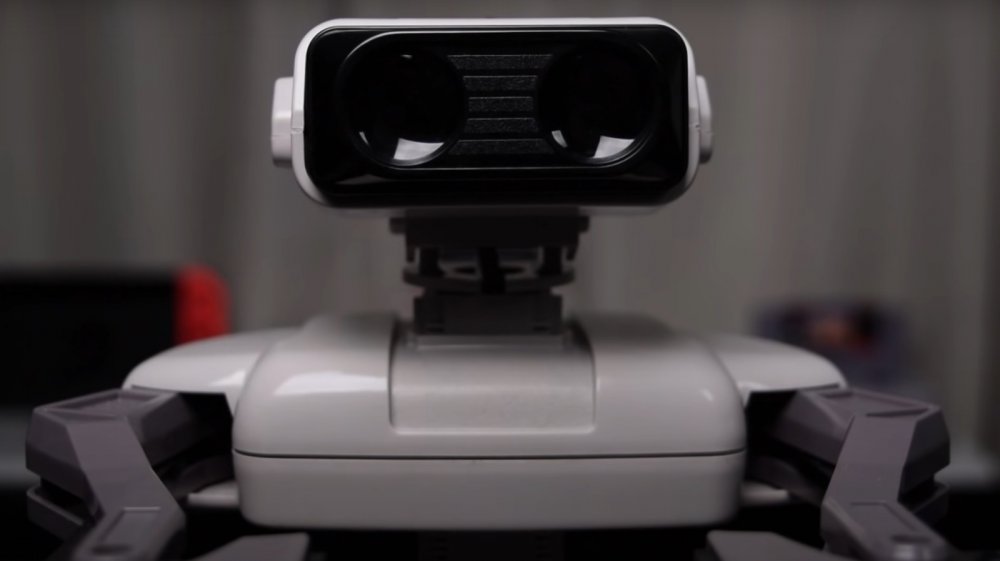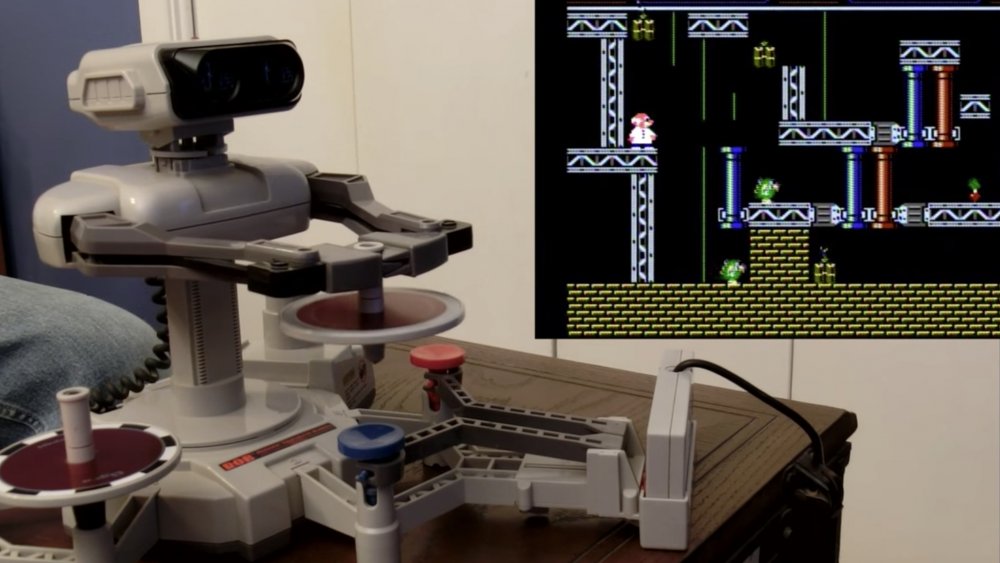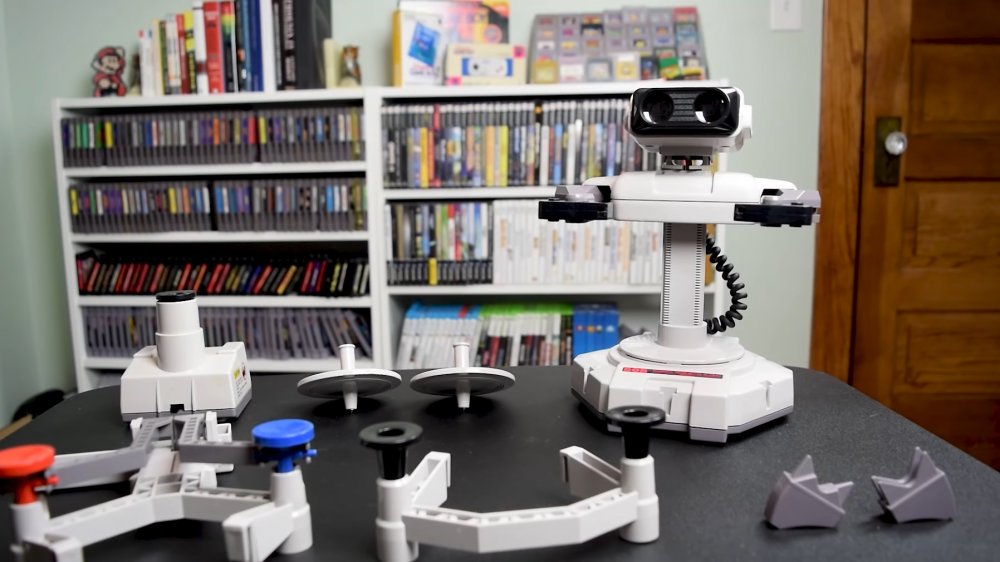The Untold Truth Of R.O.B. The Robot
You remember R.O.B. the Robot, right? When the Nintendo Entertainment System originally launched in 1985, the Robotic Operating Buddy was packaged with the deluxe version of the system (which also featured the NES Zapper) as a controller accessory. This robot, which was called the Family Computer Robot in Japan, was a gray, one-foot-tall toy that used gyro spinners and attachable claws. On the face of it, R.O.B. seems like an unimportant relic of a bygone era. Actually, though, this novelty peripheral may have saved the gaming industry.
The release of R.O.B. and the NES came at a tumultuous time in the video game industry's history, and that absolutely influenced the inclusion of the robotic controller as well as the marketing that was intended to sell Nintendo's first gaming system. It's a good thing it worked, or the gaming landscape might look a lot different today.
Here's the untold truth of the ill-fated R.O.B.
Only two games were ever made for R.O.B.
To some, R.O.B. might seem like a throwaway gimmick. After all, only two games were ever created to be used with the robot controller, and neither are exactly considered classics today.
The first game was Gyromite, and it was packed with the deluxe NES system. Gyromite was a one-or two-player game in which R.O.B. was used to raise and lower barriers and press buttons. In practice, Giant Bomb reported that the robot's movements were very slow and imprecise, making the gameplay drag. Players took on the role of sleepwalking Professor Hector, who collected and defused dynamite that had been strewn across his lab while getting past obstacles such as vines, pillars, and biting Smicks.
The second one, which was released a bit later, was called Stack-Up. In this action puzzler, you used R.O.B. to stack a bunch of colored discs to a pattern in the shortest way possible. The game also included Professor Hector and featured different modes of play, including Bingo and Memory. Retro Games Review called this one "forgettable" and without depth, noting that R.O.B.'s slow speed made the game frustrating.
Four more games were planned, The Gaming Historian reports, but as noted, the unit itself also got bad reviews. Perhaps this helped Nintendo decide to remove R.O.B. from the equation. Eventually, the NES accessory disappeared.
R.O.B. was a Trojan horse
By the time R.O.B. disappeared, however, it had succeeded in its design, which was to sell the NES. After the release of its Japanese Famicom console in 1983, Nintendo was setting its sights on a U.S. market that was extremely leery of gaming following the video game crash of 1983. It spent part of 1984 figuring out how to market the NES to a country that viewed games as a fad that had outlasted its welcome. R.O.B. became the Trojan horse that allowed Nintendo access to retailers for its new "electronic toy" idea.
And it worked. Wired reported that the NES sold 50,000 units during its first holiday season after an October 1985 test release, which was half of what it manufactured, but still enough to encourage the company to expand to other American cities. According to a survey from early 1986 obtained by The Gaming Historian, word-of-mouth advertising gave the NES a boost, and sales were driven by the requests of children. The survey showed that the number one reason kids wanted the system was R.O.B. the Robot.
Basically, R.O.B. got the Nintendo console into homes, and the system then stood on its own with games like the first Super Mario Bros. The original NES would go on to sell 61.91 million units, so focusing on R.O.B. in its marketing materials was a gamble that worked. The industry owes this robot a nice can of WD-40.



